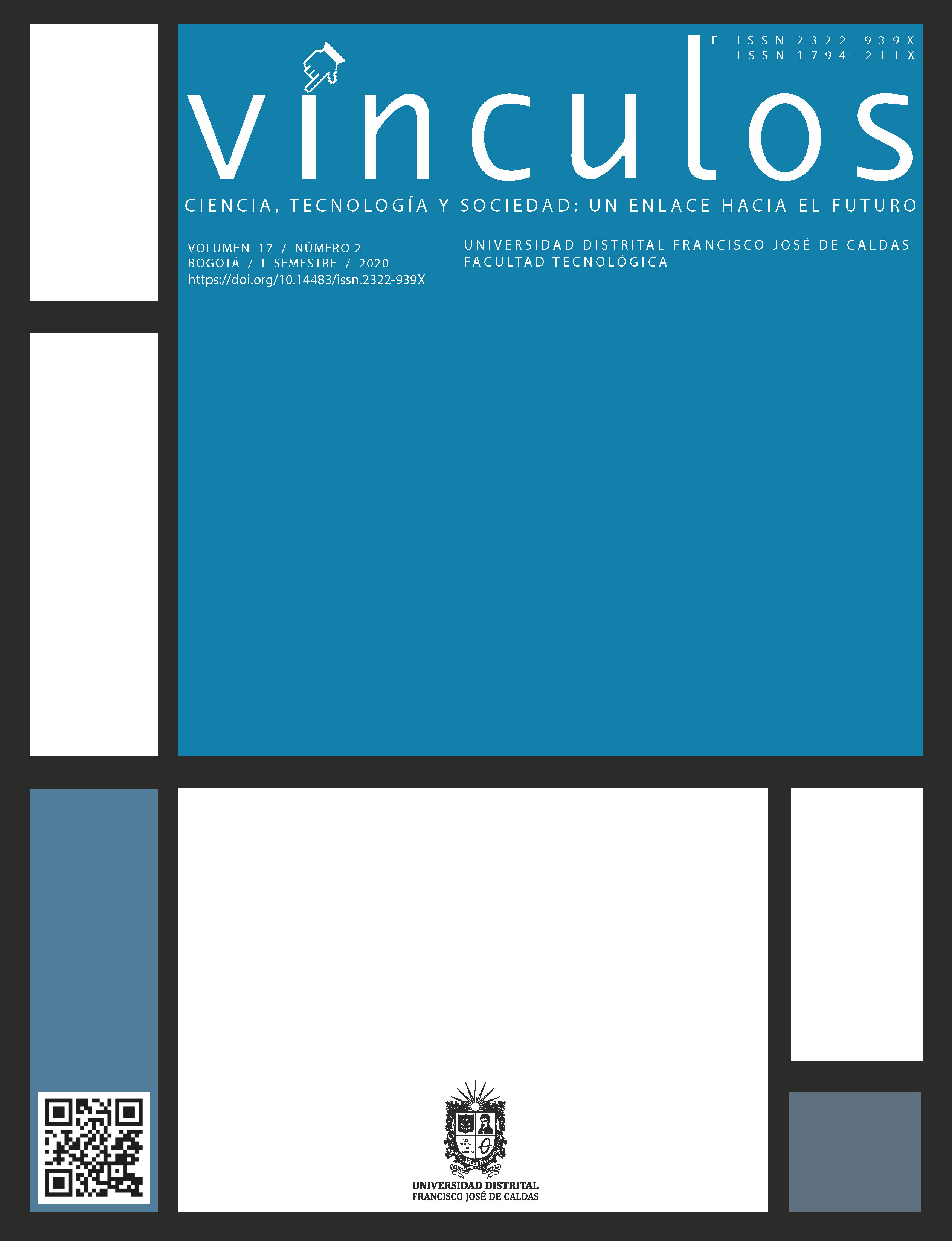DOI:
https://doi.org/10.14483/2322939X.17352Publicado:
2020-12-10Número:
Vol. 17 Núm. 2 (2020)Sección:
Investigación y DesarrolloDesarrollo de una aplicación para simular los movimientos del robot modular EMERGE en configuración tipo cadena
Development of an application for simulating the movements of the modular robot EMERGE in chain-type configuration
Palabras clave:
locomoción, robot modular, simulador, tablas de movimiento (es).Palabras clave:
Locomotion, modular robot, simulator, tables of movement (en).Descargas
Resumen (es)
Este documento presenta una aplicación basada en software de simulación, la cual renderiza los movimientos del robot modular EMERGE en configuraciones de tipo cadena de una dimensión. Además, implementa una estrategia de control de movimiento que estima las posiciones apropiadas de cada una de las articulaciones del robot para así reproducir un movimiento coordinado y continuo, teniendo en cuenta un ambiente y morfología previamente establecidos y representados en un entorno virtual 3D. Esta propuesta permite minimizar el desgaste de la estructura mecánica del robot y evitar posibles daños cuando se desee experimentar con el robot, los resultados muestran que el simulador tiene un margen de error menor al 6% en comparación con el tiempo y distancia recorridos por el robot real.
Resumen (en)
This document presents an application based in software of simulation, which renders modular robot EMERGE movements in configuration string type of one dimension. In addition, implemented a strategy of control of movements that estimate the position suitable of each articulation of robot and producing continued and coordinated movements, taking into account environment and morphology previously established and represented in a 3D virtual environment. This proposal allows minimizing wear to mechanical structure of itself and prevent possible damage when experimenting with the robot, the results indicate that the simulator has a margin of error of less than 6% compared to the time and distance travelled by the real robot.
Referencias
[2] L. C. Florez, “Simulador de robots moviles RMOV”, Metall. Mater. Trans. A, vol. 30, no. 8, p. 2221, 2004.
[3] D. Christensen, D. Brandt, K. Stoy, and U. P. Schultz, “A unified simulator for self-reconfigurable robots”, 2008 IEEE/RSJ Int. Conf. Intell. Robot. Syst. IROS, pp. 870–876, 2008. https://doi.org/10.1109/iros.2008.4650757
[4] “Webots: simulador de robot.” [Online]. Available: https://cyberbotics.com/. [Accessed: 18-May-2020].
[5] “The ARGoS Website.” [Online]. Available: https://www.argos-sim.info/. [Accessed: 18-May-2020].
[6] “Gazebo.” [Online]. Available: http://gazebosim.org/. [Accessed: 18-May-2020].
[7] J.Seguido, “Análisis y comparación de las principales plataformas de simulación robótica y su integración con ROS,” 2019.
[8] C. Pinciroli et al., “ARGoS: A modular, multi-engine simulator for heterogeneous swarm robotics,” IEEE Int. Conf. Intell. Robot. Syst., pp. 5027–5034, 2011.
[9] H. S.G.M., C. A. Nelson, and P. Dasgupta, “ModRED: A modular self-reconfigurable robot for autonomous extra-terrestrial exploration and discovery”, Int. Des. Eng. Tech. Conf. Comput. Inf. Eng. Conf., pp. 747–754, 2011.
[10] “DRL - The Self-Reconfiguring Robotic Molecule”. [Online]. Available: http://groups.csail.mit.edu/drl/wiki/index.php?title=The_Self-Reconfiguring_Robotic_Molecule. [Accessed: 02-Sep-2019].
[11] M. Henry and A. Hern, “Estimación de una serie de movimientos utilizando un algoritmo de optimización bio-inspirado para la operación de manera autó noma y On-Line de una plataforma Multi-Robot (Caso robot modular),” 2018.
[12] Henry Hernández, Rodrigo Moreno, Andres Faina, and Jonatan Gomez, 2018 "Design of a bio-inspired controller to operate a modular robot autonomously". In Proceedings of the 16th Ibero-American Conference on Artificial Intelligence, Trujillo, Peru, November 13-16, 2018. https://doi.org/10.1007/978-3-030-03928-8_26
[13] Rodrigo Moreno, Ceyue Liu, Andres Faina, Henry Hernandez, and Jonatan Gomez. 2017. " The EMeRGE modular robot, an open platform for quick testing of evolved robot morphologies". In Proceedings of GECCO ’17 Companion, Berlin, Germany, July 15-19, 2017. https://doi.org/10.1145/3067695.3075616
[14] Ceyue Liu, Jiangong Liu, Rodrigo Moreno, Frank Veenstra and Andres Faina, 2017. "The impact of module morphologies on modular robots". ICAR 2017. https://doi.org/10.1109/icar.2017.8023524
[15] “3D World Editor - MATLAB y Simulink”. [Online]. Available: https://www.mathworks.com/help/sl3d/the-3d-world-editor.html. [Accessed: 10-Aug-2019].
[16] R. Moreno García, “Diseño y Simulación de un Algoritmo para el Control de un Robot Modular tipo Cadena/Design and Simulation of an Algorithm to Control a Chain Type Modular Robot”, p. 111, 2010.
[17] “Tesis Doctoral Robótica Modular Y Locomoción: Aplicación a Robots Ápodos”, Univ. Autónoma Madrid Esc. Politécnica Super., no. August, p. 491, 2008.
Cómo citar
IEEE
ACM
ACS
APA
ABNT
Chicago
Harvard
MLA
Turabian
Vancouver
Descargar cita
Visitas
Descargas
Licencia
Derechos de autor 2020 Revista vínculos

Esta obra está bajo una licencia internacional Creative Commons Atribución-NoComercial 4.0.
2.png)
Este obra está bajo una licencia Creative Commons Atribución 4.0





